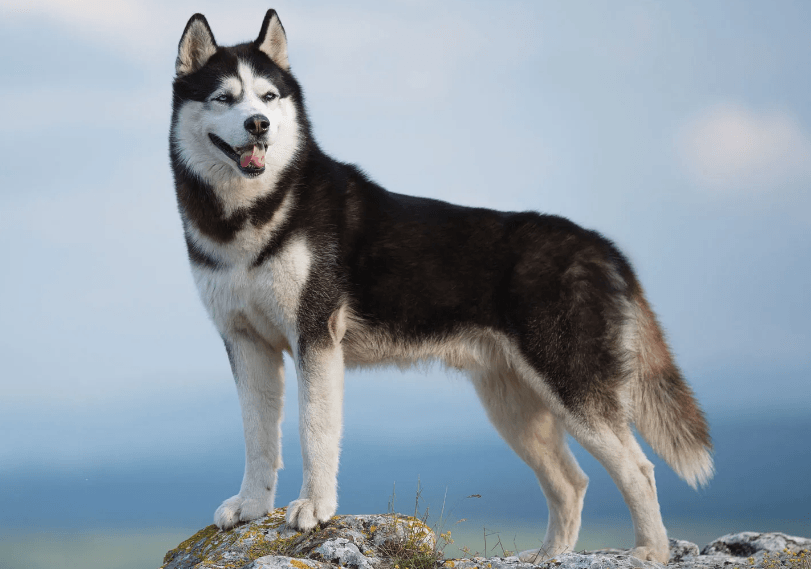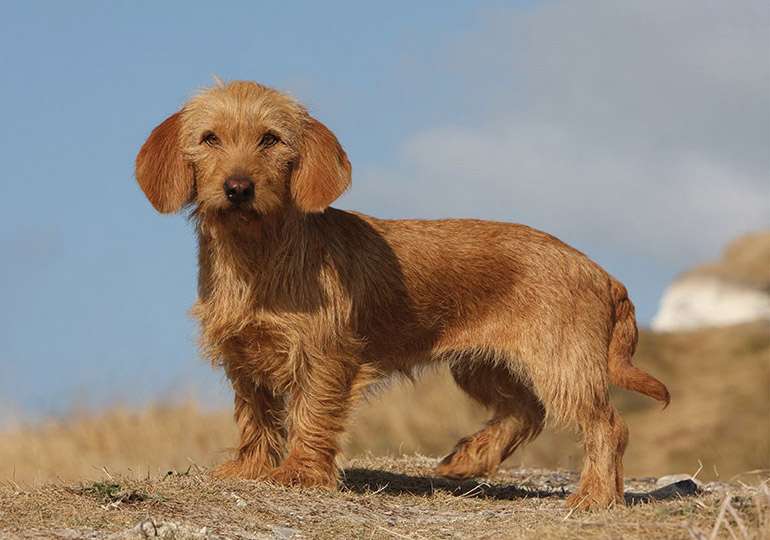
Description
The Siberian husky has upright ears and eyes that range in colour from brown to blue, or perhaps even have one of each colour. The topline is level, and the neck is carried in a straight line. The thick tail is carried up in a sickle or occasionally just straight out from behind. Siberian huskies have a thick, silky coat with lots of undercoat that is extremely dense.
Origin/History
The Chukchi people of Northeast Asia are the breed’s original home, where they created the Siberian husky primarily as a sled dog. They belong to the Spitz family genetically. The Siberian husky was introduced to the United States in the early 20th century when Alaskans developed an interest in the breed.
Huskies have become excellent sledge dogs throughout time. The delivery of antitoxins to Nome, Alaska during a diphtheria epidemic may have been the most remarkable. The Iditarod Trail Sled Dog Race was created every year to honour this life-saving trip. In 1925, a statue of Balto, the lead dog who finished the serum run, was built in New York City’s Central Park.
The American Kennel Club (AKC) first recognized the Siberian husky in 1930. They have dutifully continued to work as sled dogs, but are now more frequently recognized as companion animals. According to the AKC, they are the 12th most popular breed in the United States.
Temperament
Siberian huskies are playful, fun-loving dogs with upbeat attitudes that cheer up everyone they come into contact with. Due to their mischievous temperament, owners must be able to keep up with them both emotionally and physically. They would thrive in a home with other animals and enjoy the companionship of both humans and animals.

Care
Exercise
Running is beneficial for huskies as long as the weather isn’t too warm. As the husky breed is only somewhat heat-tolerant, you might need to come up with inventive indoor workout routines for it while it’s hot outside. There will likely be several holes in your yard because huskies enjoy digging. A bored husky may be quite destructive, whether indoors or outside.
Grooming
The Siberian husky can tolerate extremely low temperatures with to its robust, double-coated coat, yet it does not perform well in hot conditions. The Siberian husky has a soft undercoat, and a thicker, slightly coarser hair on top.
For the majority of the year, this dog breed sheds very little, but then, over a period of about three weeks, known as blowing the coat, they shed quite a bit. Your yard (and home) will probably be covered in tufts of husky fur during that time, and it will be difficult to keep up with the shedding.
Once or twice a week, give your husky a thorough brushing. When there is a lot of shedding, the Furminator is a fantastic item to utilize. You won’t need to bathe a Siberian husky very often because they are noted for being fastidious dogs who keep themselves clean and have little dog odour. They maintain their nails short and trim them frequently to prevent splitting and irritation. To maintain good dental health, brush your dog’s teeth a few times each week.
Training
Huskies can be noisy (typically in the form of howling or whining), and they are intelligent, active canines. To keep them content and healthy, they need a lot of training and activity. Huskies cannot be walked off-leash since they will be out exploring and chasing small animals. Many Huskies have a want to explore and can be escape artists. They also require a strong physical barrier that is secured so they cannot dig under it and high enough to prevent them from bounding over it. For your Husky to focus its energy, serious training is a must. A Husky may occasionally appear out of control if they are not given adequate exercise and instruction.
Diet and Nutrition
Siberian Huskies were developed to eat less than certain breeds of comparable size. Two meals per day, each containing up to a cup of dry dog food, should be given to your dog. The particular nutritional requirements for your dog will vary based on its size, activity level, age, and other aspects. To avoid obesity, keep an eye on your dog’s weight and talk to your veterinarian about your dog’s nutritional requirements.
Table





